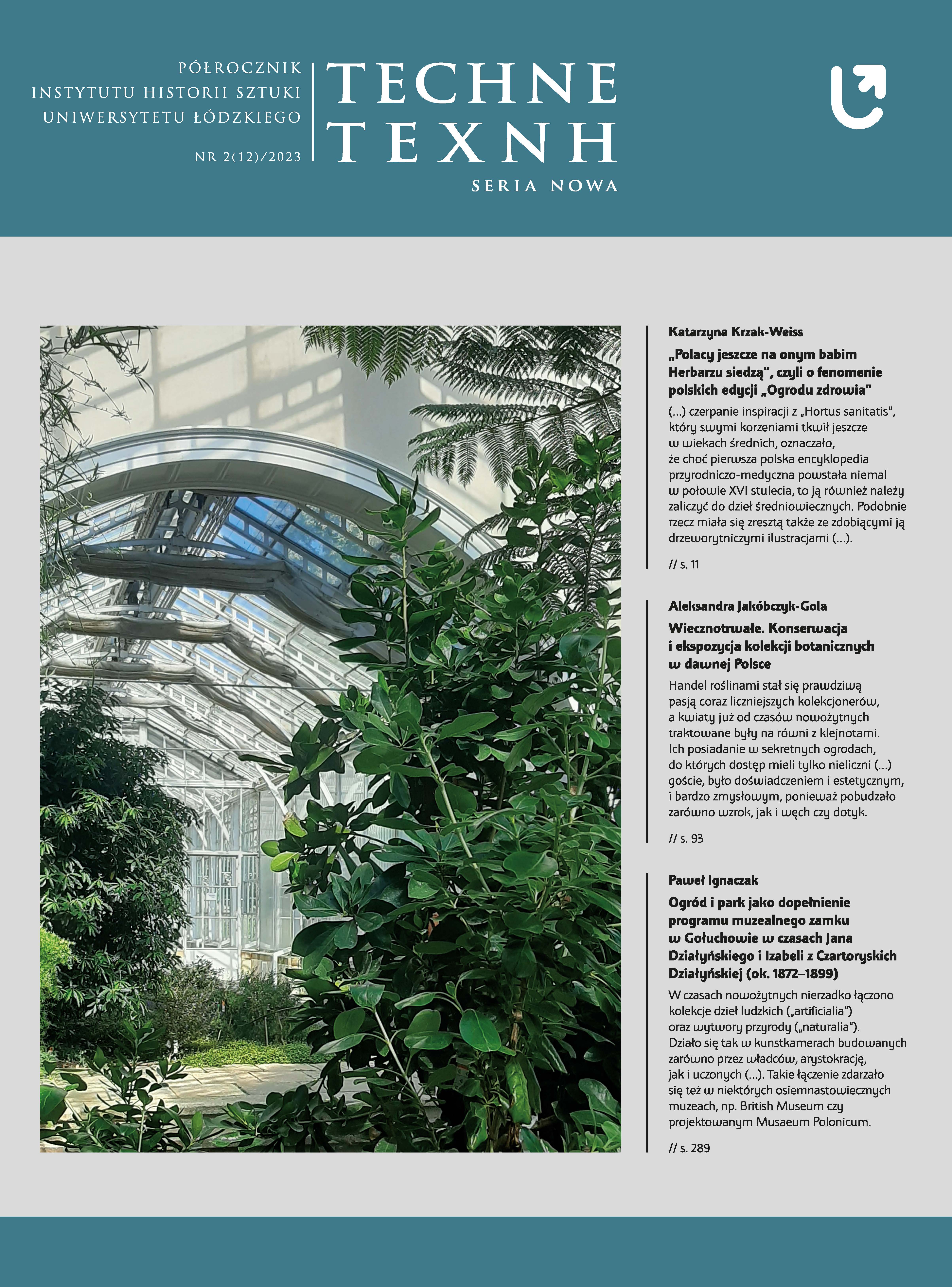„Jak cię widzą, tak cię piszą” – ogród na miarę ambicji i możliwości łódzkiego fabrykanta
“Fine feathers make fine birds” – a garden tailored to the ambitions and capabilities of a factory owner from Łódź
Author(s): Maria DankowskaSubject(s): History, Fine Arts / Performing Arts, Social history, Special Historiographies:
Published by: Wydawnictwo Uniwersytetu Łódzkiego
Keywords: Łódź; 19th century garden; manufacturer’s residence; city landscape
Summary/Abstract: A factory owner’s garden in Łódź is an interesting phenomenon compared to other 19th-century designs of a similar nature. It is distinguished by its specific location in the area of a factory town, among multi-functional buildings. Most private gardens were modeled on European designs, especially French and English that were fashionable at that time. Larger and more impressive gardens were established by specialized foreign gardening companies or specialists from outside the Kingdom of Poland, and later entrusted to the care of Polish gardeners.The gardens varied in size, equipment and plantings, but in most of them, in addition to the materials typical of European gardens, there were also features typical of the landscape of an industrial city. A specific view and background of the garden was the factory complex, including the huge spinning mill buildings standing next to the owner’s palace or villa. It also happened that in the garden itself, alleys or parts of flower beds were covered with brick or coal dust. The plants were also covered with factory dust, giving the garden a characteristic, slightly gloomy appearance. The landscape of the industrial city left its own mark on the gardens in Łódź.However, the proximity of factory complexes, resulted in some benefits, such as the availability of heating needed in greenhouses and conservatories, local water supply (pumping stations and hydrophores), which facilitated the implementation of a representative and more decorative program of Łódź gardens. Above all, income from industrial activities provided financial resources to establish and maintain a high standard. Gazebos, fountains, sometimes even tufa caves and stages were built there, and the utility program was sometimes enriched with larger water reservoirs. Special species of trees and shrubs were imported. Next to them there were impressive seasonal plants, including, for example, orange trees displayed in pots in the summer. The above-mentioned elements and many others created the specific and unique atmosphere of residential gardens in Łódź at the end of the 19th century.How important a role the garden played in the residence of a Łódź factory owner, can be proven by the fact that at the turn of the 19th and 20th centuries, two Garden Exhibitions were organized in Łódź. Numerous descriptions of the garden compositions, small architectural objects and equipment of Łódź gardens presented at that time constitute today a testimony to the preferences and ambitions of the bourgeois and convey knowledge about the image of Lodzermensch’s garden.
Journal: TECHNE. Seria Nowa
- Issue Year: 2/2023
- Issue No: 12
- Page Range: 239-263
- Page Count: 25
- Language: Polish

